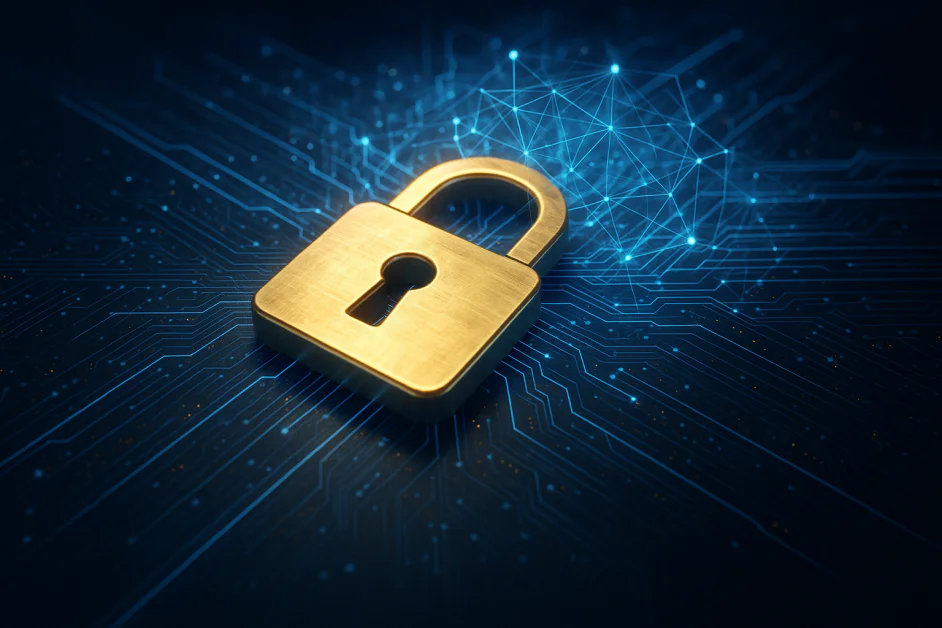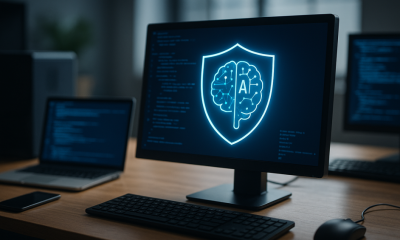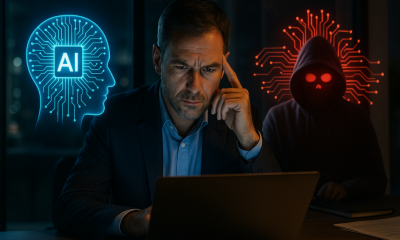Thought Leaders
AI-Enhanced Encryption Techniques for Next-Gen Data Security

Imagine you are walking through a battlefield, and arrows are flying from every direction, attackers are changing their tactics on the fly, and ambushes popping up from where you least expect. Now imagine your shield doesn’t just block attacks it also shifts shape, changes material, and reinforces itself the moment it senses danger. This is what AI-enhanced encryption is becoming- a shape-shifting shield that learns, adapts, and evolves to protect your data in a constantly changing cyber landscape.
As cyberattacks grow more sophisticated, traditional encryption which is still important is struggling to keep pace. Hackers now use AI to probe weaknesses, launch deep fake phishing attacks, and even simulate legitimate user behaviour. It’s no longer enough for encryption to stay static. It needs to think. It needs to evolve. And that’s exactly what AI is making possible.
Fortifying Encryption Against Emerging Attack Vectors
Encryption transforms readable data into unreadable code so only the right people can access it. But cybercriminals are getting smarter using new tools like AI and quantum computing to crack these codes faster than ever before.
Here’s where AI flips the script. By analysing millions of attack patterns, AI systems can identify where encryption might fail and proactively patch vulnerabilities. Think of it like a security system that doesn’t just sound the alarm rather it notices unusual footprints outside and adds extra layers to the wall before the intruder even tries to break in.
According to the Forrester report Quantum Security Isn’t Hype, attackers are already stealing encrypted data today with plans to break it later using quantum computers, an approach known as “harvest now, decrypt later.” It’s like a respected weather forecast saying, “A big storm is coming.” Your shield might look strong today, but it could fail tomorrow when quantum power becomes real.
That’s where AI-enhanced encryption comes in, your smart umbrella. It covers you from today’s threats; it predicts the storm, supports itself before the first strike, and reshapes mid-battle to keep your data safe in a world where threats evolve faster than ever.
Why Waiting Is the Real Risk
The danger are the attacks we can see and also it’s the silent countdown behind the data already in enemy hands. Every file stolen today under strong encryption could be tomorrow’s breach headline once quantum decryption becomes reality. That’s what makes AI so critical. It strengthens the lock, it adapts continuously, learning from every attempted breach, anticipating emerging tactics, and defends at machine speed. Waiting for quantum systems to go mainstream before upgrading encryption is like waiting for a flood before building a dam. The smart move is to prepare now, with AI as the foundation of a security strategy built not just to survive, but to outsmart the future.
Building Adaptive Encryption Systems
Traditional encryption is often “one-size-fits-all”, but not all data or situations carry the same risk. AI enables adaptive encryption, which acts like our metaphorical shield. It changes its shape based on where the attack is coming from and what’s at stake.
For example, if a system notices data being accessed from a suspicious location or device, AI can instantly upgrade the encryption, rotate keys, or even lock access altogether. This is called risk-aware encryption, and it’s becoming a key part of enterprise security.
Predicting and Neutralizing Vulnerabilities Before They’re Exploited
One of AI’s biggest superpowers is prediction. Just like a weather forecast warns us of storms before they hit, AI can scan encryption systems and spot cracks in the armour before hackers do.
These models analyse code, traffic, and past attack patterns to find weak spots like outdated algorithms, poor key management, or unusual access behaviour. More impressively, they can automatically respond by patching the weakness, strengthening the key, or alerting administrators.
AI + End-to-End Encryption- Watching Without Peeking
End-to-end encryption (E2EE) ensures that only the sender and receiver can read a message, great for privacy, but also tricky for security monitoring. If no one can see inside the message, how do we check for danger?
AI provides a clever solution- it watches the patterns, not the content. Think of a guard who doesn’t listen in, but watches how envelopes are passed, when, and to whom.
AI can spot anomalies like sudden data spikes, irregular traffic times, or strange connection routes, and flag these without breaking the encryption.
The Future of Encryption- Smarter, Faster, Quantum-Ready
We have entered a world where smart cities, autonomous vehicles, and quantum computers have become everyday realities. That means data is flying around faster than ever, and encryption must keep up.
AI is the key to future-ready encryption because it brings-
- Efficiency- Less energy-hungry encryption that works faster on devices with limited power.
- Intelligence- Constant learning from global cyber activity.
- Scalability- Protection across billions of connected devices, not just computers.
- Quantum resistance- New encryption methods being developed today must survive quantum decryption tomorrow.
In the U.S., the National Institute of Standards and Technology (NIST) is leading post-quantum encryption research. AI is playing a vital role here, helping researchers test algorithms against simulated quantum-powered attacks, ensuring the next generation of encryption can survive what’s coming.
From Static Locks to Living Shields
Data is no longer stored in locked drawers, it flows through phones, satellites, servers, and smartwatches. In this hyperconnected world, a fixed defense won’t do. We need encryption that moves, flexes, thinks, and evolves.
AI turns encryption into something far more powerful than a digital padlock. It becomes a living, shape-shifting shield, one that responds to threats before they strike, grows stronger with every attack, and adapts instantly to its environment.
And as our digital lives expand, this intelligent shield may be the only thing standing between our information and the next invisible threat.












